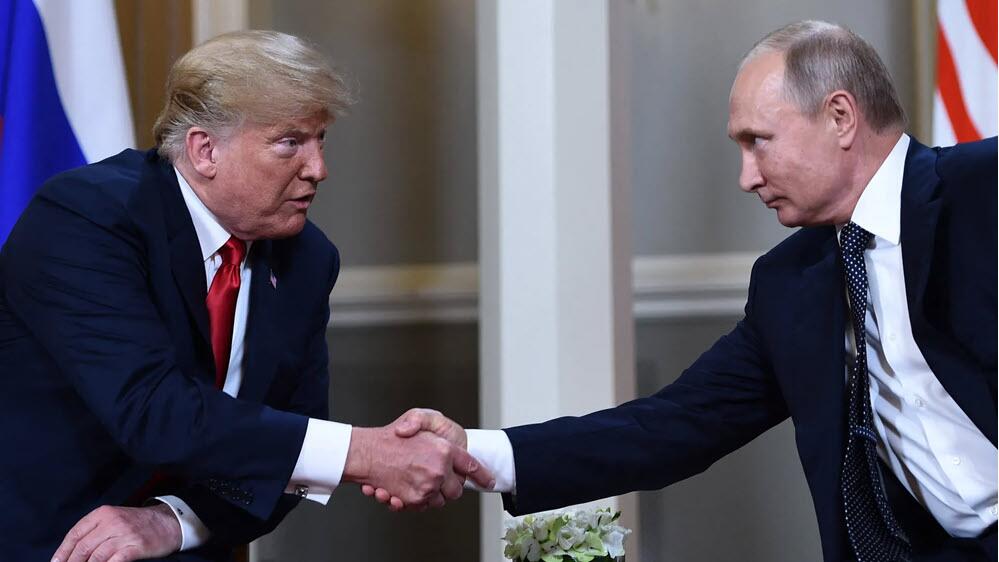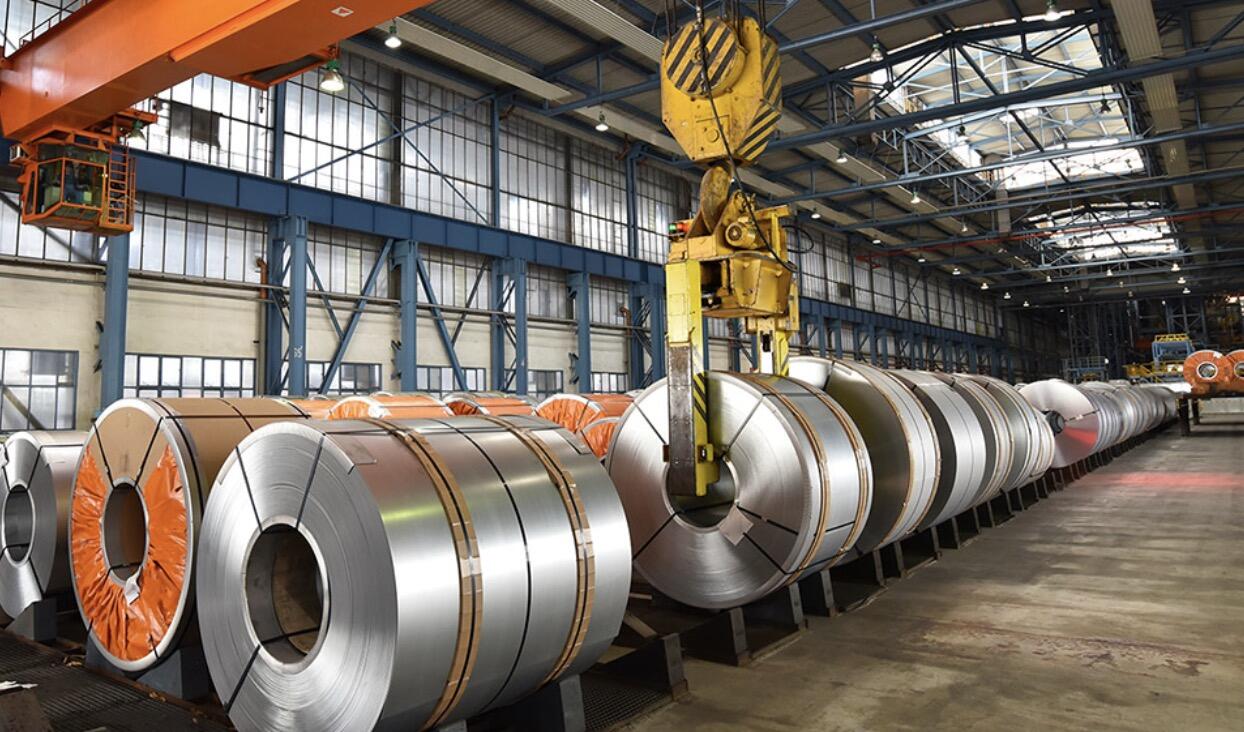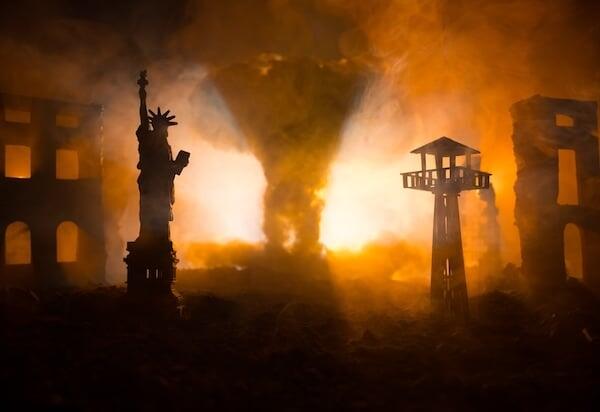
Donald
Trump stays true to his line and asserts dominance over the
geopolitical chessboard — symbolically as well. Following the
announcement of a trade deal with the EU at his golf resort in
Turnberry, Scotland, peace talks in the Ukraine conflict with Russian
President Vladimir Putin are now scheduled in Alaska.
The venue of
a negotiation often predefines the balance of power between opponents.
In that sense, it must be read as a clear show of force that both
European Commission President Ursula von der Leyen and UK Prime Minister
Keir Starmer — notably without military fanfare — traveled to Trump’s
private resort in Turnberry
to be politically “placed” by the American president. Judging by the
outcome of those talks, one conclusion is unavoidable: the European
Union no longer plays in the league of the great powers. Washington’s
interest in intra-European affairs has noticeably cooled, focusing
essentially on two things: an orderly withdrawal from military
entanglements, and the defense of US corporate interests in the EU
single market.
We are witnessing a shift of power from the Atlantic to the Pacific.
Europe Losing Grip
It’s
hardly a secret: China and the United States will be setting the
standards of international politics in the future. Russia, the world’s
most resource-rich country, may be labeled by Europeans as a pariah
state and a malicious hub of all evil — but that does not change the
fact that the age of postcolonial European dominance is ending, and
Moscow will have no trouble playing its resource-market cards outside
the shrinking European sphere of influence.
In this spirit, Russian President Vladimir Putin will travel on August 15 to “away territory” in Alaska — once part of Russia — to preliminarily negotiate peace terms in Ukraine with President Trump. Trump sees progress
in the stalemated conflict and stresses that the talks will likely lead
to a land-swap arrangement “to the benefit of both sides.” While the
Russian government has not issued an official statement, much suggests
Moscow will not return the occupied territories in Donbas, Luhansk,
Zaporizhzhia, and Kherson, nor Crimea. Russia currently holds the
military initiative and is increasing pressure on Ukraine and its allies
to force a resolution.
To avoid overshadowing the personal
meeting, the White House postponed a tariff ultimatum — originally set
for August 9 — that would have imposed 100% duties on Russian goods if
the war continued, pushing it back to August 27.
Alaska as a Signal
We
will have to see what unfolds in the meantime and whether potential
disruptions derail this cautious rapprochement once more. One recalls
the much-discussed visit of former UK Prime Minister Boris Johnson, who, two months after the outbreak of war, acted as a kind of shadow diplomat to reject a Russian-proposed peace deal.
What
is now on the table again — a land swap and Ukraine’s exclusion from
NATO — was flatly rejected back then. Hundreds of thousands of dead and
wounded later, there appears to be a renewed turn toward diplomacy in
light of the bleak military situation. This time, however, it is the
Americans applying pressure on the warring sides. From Europe, little is
heard apart from intense rearmament efforts and a declared will to
“re-militarize” the population, as the German government has repeatedly
emphasized.
Diplomatic Thread to Be Picked Up
The
diplomatic thread is now to be picked up again in Alaska. Until 1867,
Alaska was Russian territory before the US purchased it from Tsar
Alexander II for $7.2 million — after Russia’s defeat in the Crimean War
left its treasury depleted. The geography here speaks volumes: Alaska
lies between Russia and the US, separated only by the Bering Strait,
symbolizing the direct neighborhood of two great powers that may now be
entering a new phase of rapprochement in a rapidly changing world order.
For
the Ukraine talks, the location signals that even deeply rooted
geopolitical divides can be bridged through pragmatic agreements. At the
same time, Alaska has strategic importance for the Arctic, whose trade
routes and resources will likely be integrated into the future
architecture of global power.
By hosting the Russian president at
such a neuralgic spot, Trump fuses historical reconciliation with
present-day power politics, creating a symbolic setting that suggests
readiness for compromise without conceding sovereignty.
Trump’s Move
What
might look like a PR coup in the headlines is in reality a move at the
highest level of geopolitics. By inviting Putin onto US soil, Trump
openly breaks with the prevailing doctrine of keeping Russia isolated.
The ICC arrest warrant, the sanctions regime, years of carefully
cultivated enemy imagery — all of it, should the meeting take place,
would evaporate in significance with a single photograph.
The
message: The rules the foreign-policy establishment holds as untouchable
are negotiable — not carved in stone — at least if the President of the
United States decides so.
Behind closed doors, the focus will
likely be on redrawing spheres of influence: a possible Ukraine endgame
in exchange for Russian concessions — energy, Arctic passage, perhaps
even a gradual distancing from Beijing. For Trump, the meeting offers a
chance to pull Russia, perhaps through trade, into America’s
geostrategic orbit. This would align with the raw-materials deal
signed with Ukraine in April, granting the US exclusive access to the
country’s rare earths as well as certain oil and gas reserves.
But
the true test linked to this meeting lies within the inner workings of
America’s power machine: Can Trump carry out such an unconventional
operation without sabotage from his own security apparatus? Should he
manage to launch a robust peace process, he will have proven that he has
taken full control of US foreign policy strategy.
That would be a decisive blow against the neocons pushing for escalation in Ukraine — and a further step toward peace.
* * *
About
the author: Thomas Kolbe is a German graduate economist who has worked
as a journalist and media producer for clients from various industries
and business associations. As a publicist, he focuses on economic
processes and observes geopolitical events from the perspective of the
capital markets. His publications follow a philosophy that focuses on
the individual and their right to self-determination.



